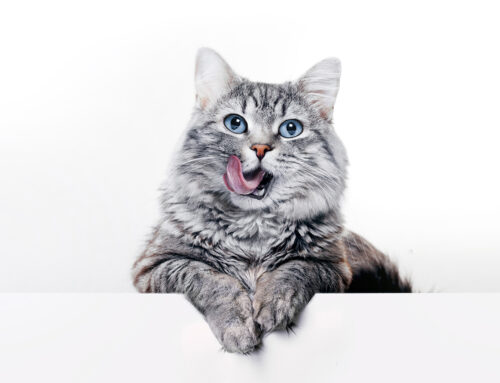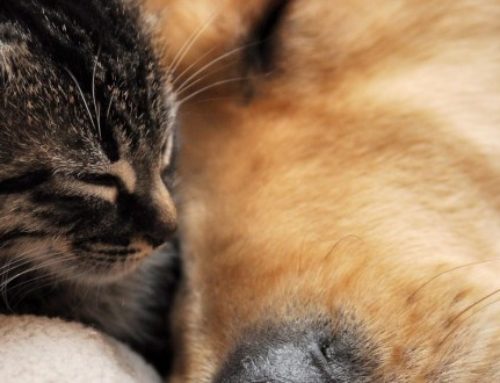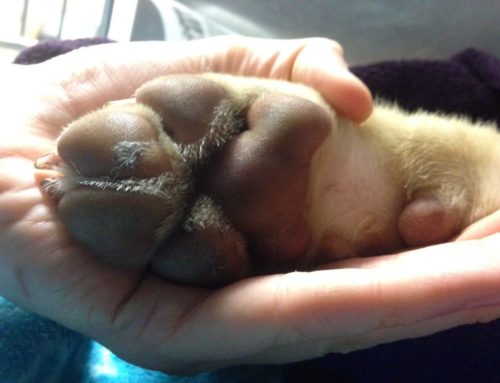Cats are usually stoic animals who will hide any signs of dental problems and pain until the condition has become severe. This often means that owners will not be aware that their pet is suffering from painful dental issues because they are seen to be eating and behaving normally. This often results in dental issues not being detected until they have reached an advanced stage. Unfortunately, cats can commonly suffer from certain dental problems, so we want to highlight to cat owners how important dental checks are, so that these painful dental issues are detected and treated at an earlier stage.
For the rest of this article we are going to discuss FORLs, which occur due to a specific tooth resorption issue that cats can develop. However, if you feel that your cat has any other problems with their mouth or teeth then one of our vets would be happy to check your pet.
What are FORLs?
Feline Odontoclastic Resorptive Lesions (FORLs) are a common dental condition that every cat owner should be aware of. It is a progressive disease, and painful if it is not detected at an early stage. Previously, you may have heard this condition referred to as either a neck lesion or feline caries but now either the term FORLs or tooth resorption is more commonly used. This condition is usually seen in cats over the age of 2 years old, with the risk of developing a FORL increasing as a cat gets older. Once a cat has had a tooth affected by a FORL, they are more likely to suffer from further lesions in their remaining teeth, as any tooth can be affected.
At the start of this condition, tooth destroying cells, called Odontoclasts, start to break down the tooth root, which is the part of the tooth that is hidden below the gums so cannot be seen. Eventually, as a FORL progresses and the tooth resorption continues, the majority of the root may be destroyed, with the crown (the top part of the tooth that is visible above the gums), being the only part of the tooth remaining.
Unfortunately, we do not know what causes this disease so are not able to prevent FORLs from occurring. This means that it is important that the presence of FORLs is detected as early as possible to prevent your cat from suffering from any pain. We will also advise regular dental monitoring for any cats who have had previous FORLs so that any new lesions can be detected and treated early.
What signs will my cat show if they are suffering from FORLs?
There are a range of signs that affected cats may show, depending on the stage of the disease, from no observed signs through to refusing to eat.
Common signs of FORLs include:
- Salivating
- Eating on one side of the mouth
- Sensitive mouth
- Pawing at face
- Chattering teeth
- Anorexia – not eating
If your cat is showing any signs of pain when eating or difficulty eating then we would very strongly recommend bringing your cat in to see one of our vets for a dental check.
How are FORLs diagnosed?
Often, only teeth that are affected by an advanced FORL can be diagnosed by examining your cat’s mouth. This is because the early damage to the tooth root cannot be seen as it is hidden beneath the gum, so our vets can only see evidence of a FORL when there is damage to the crown, as this is the part of the tooth that can be seen.
However, FORLs can be detected at an earlier stage, through the use of dental x-rays. These x-rays are usually taken at the same time as routine dental work, such as a scale and polish, as the x-rays can be taken during the same anaesthetic, while also giving our vets valuable information about the health of your cat’s teeth. When assessing your cat’s dental x-rays, our vets will be able to check the roots of each tooth for any signs of damage and if any signs of FORLs are detected then treatment can be performed at this earlier stage.
What is the treatment?
The treatment for FORLs usually involves the extraction (removal) of any affected teeth. This means that the tooth, along with the damaged painful tooth root, are removed and this will resolve your cat’s painful mouth.
Occasionally, when there has been excessive damage to a tooth root it is impossible to remove all of the remaining parts of the root, so it may be recommended that a crown amputation is performed. This is where the visible part of the tooth is removed and the remaining tooth roots are left for the body to continue resorbing and the overlying gum is sutured over the top. However, this procedure is not suitable for every case, so if one of our vets recommends this procedure for your cat then they will discuss the process with you in more detail.
If you have any concerns about your cat’s mouth or if you would like your cat to have a routine dental examination, phone our practice to book an appointment with one of our vets. Our veterinary team are also happy to answer any of your questions if you would like any further information of dental issues in cats, or how to keep your cat’s mouth healthy.






